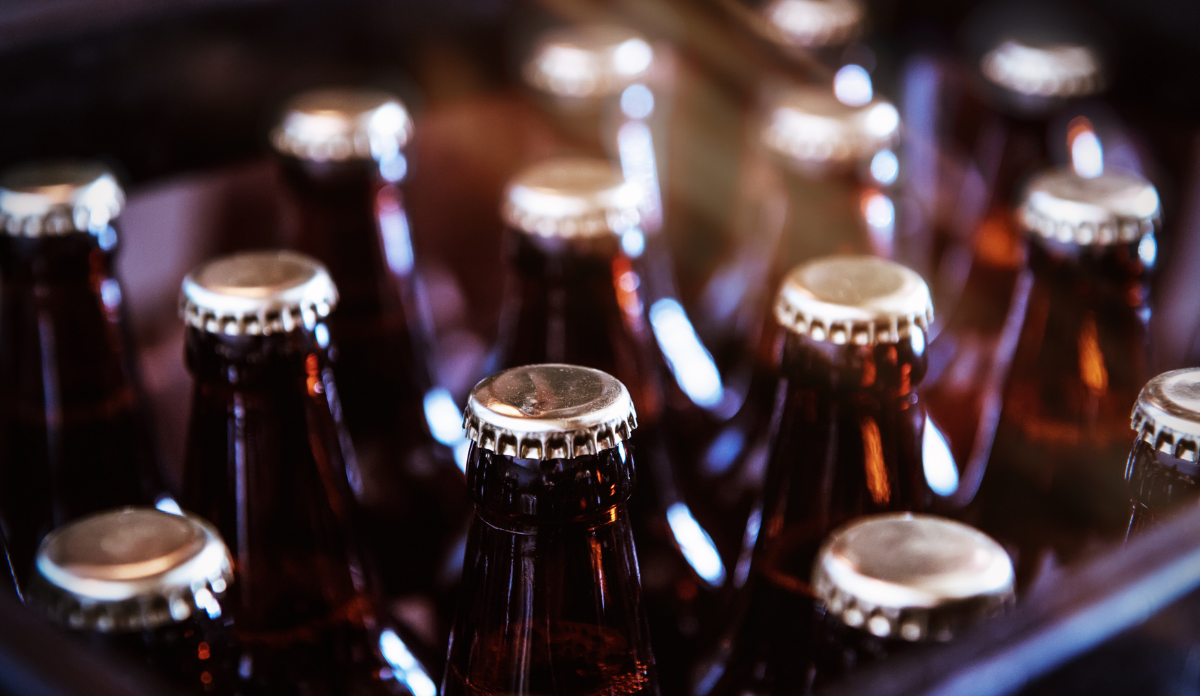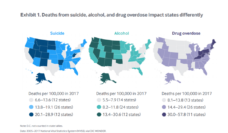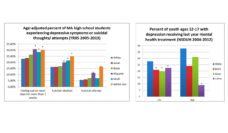Alcohol remains the most used substance among adolescents in the United States. In 2019, the prevalence of current alcohol use was lower among Black adolescents (16.8%) than White and Hispanic adolescents (34.2% and 28.4% respectively), yet Black youth experienced worse outcomes associated with alcohol use than other teens. Black adolescents who use alcohol tend to have a greater risk for alcohol dependence, legal troubles, academic challenges, gun violence, alcohol-related death, and mental health disorders.
Due to residential segregation, Black adolescents are more likely to live in neighborhoods where they are overly exposed to many alcohol advertisements, high density of shops selling alcohol, and the trauma-inducing events that go along with these exposures. Prior research has identified this phenomenon as a result of systematic racism.
The sequelae of racism have led to negative mental health outcomes including, but not limited to, mood disorders, major depressive disorders, anxiety, and post-traumatic stress disorder. But CDC data from 2017 show that 90% of Black Americans over age 12 who have substance use disorders did not receive either substance use or mental health treatment.
Racial identity—a culturally protective factor defined as an individual’s self-concept and perceptions about what it means to be a certain race—has been found to reduce mental health symptoms among adolescents, such as anxiety and depressive symptoms and alcohol use. The benefits of bolstering racial identity, however, are understudied among Black adolescents who misuse alcohol.
The responsibility to challenge negative stereotypes and mistreatment of Black people falls on all concerned citizens.
In our recent study, we identified the role of racial identity as a protective factor against alcohol use and mood disorders among Black adolescents previously enrolled in Project GOLD, a randomized controlled trial of a an HIV/STI prevention intervention among sexually active Black youth, age 14 to 17. We conceptualized racial identity as pro-Black attitudes, anti-White sentiment, and racism awareness. Pro-Black attitudes were defined as not feeling the Black race is inferior to other races, while anti-White sentiment entailed being against the belief that White people are supreme to all other racial groups. Racism awareness was defined as the recognition that others are likely to view and treat you negatively solely due to your race.
We found that high pro-Black attitudes were associated with reduced mood disorders, but there was no association with alcohol use. Increased levels of racism awareness were also associated with increased mood disorder symptoms and levels of alcohol use. High anti-White sentiment scores measuring disapproval of White supremacy were protective against alcohol use and being diagnosed with a mood disorder.
We argue that, while Black adolescents are more likely to be exposed to racism, racial identity can serve as a protective mechanism to alleviate the effects of racism, and it may be critical for reducing their chances of using alcohol and other substances as a coping mechanism. We cannot, however, place the burden of eradicating racism on those who are already oppressed. The responsibility to challenge negative stereotypes and mistreatment of Black people falls on all concerned citizens.
Researchers and clinicians working with Black adolescents should focus on providing strengths-based strategies that improve their internal responses to racism and strengthen their racial identity and pride to mitigate the negative impact of racism awareness on alcohol use and mood disorders.
Photo via Getty Images


















